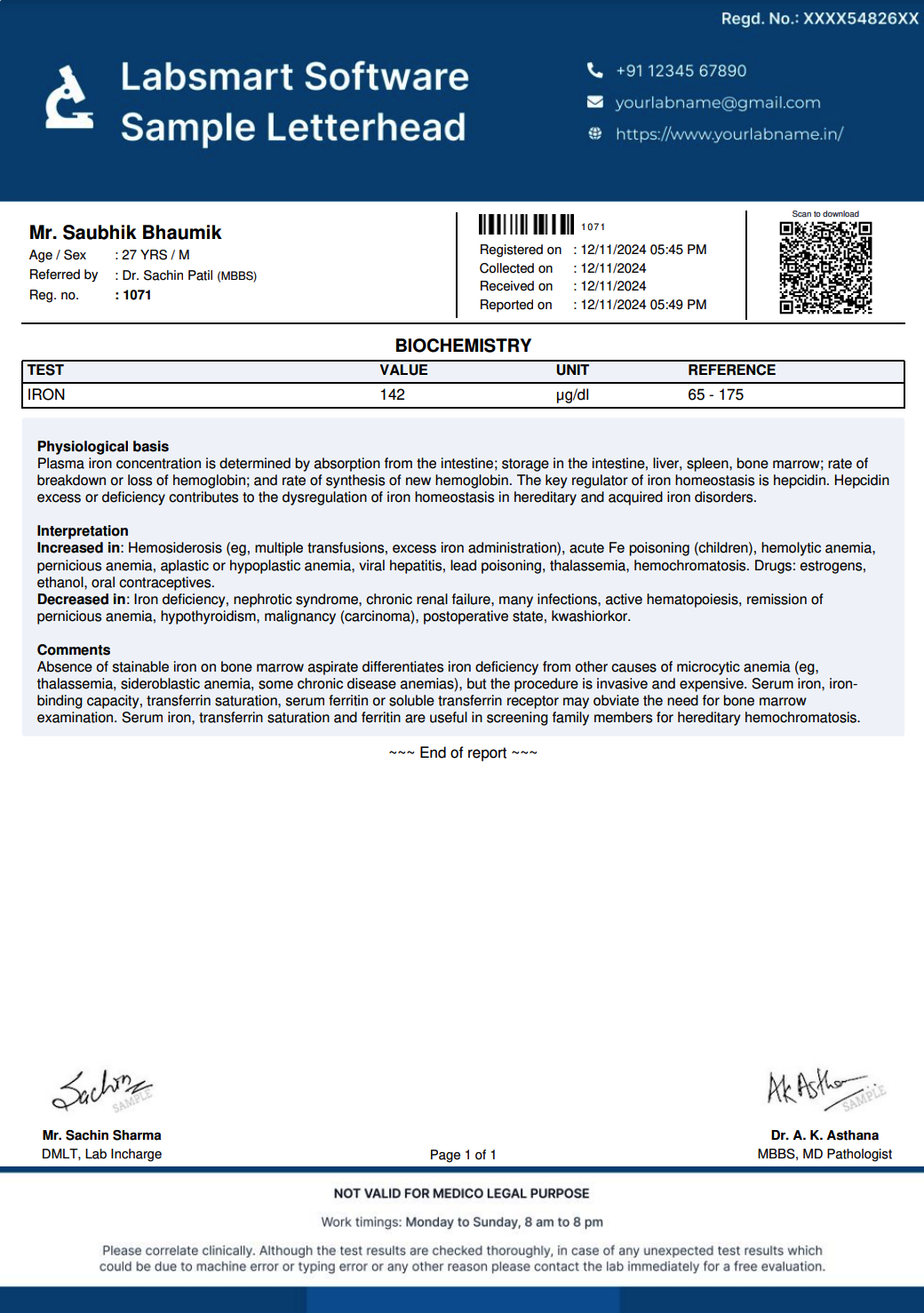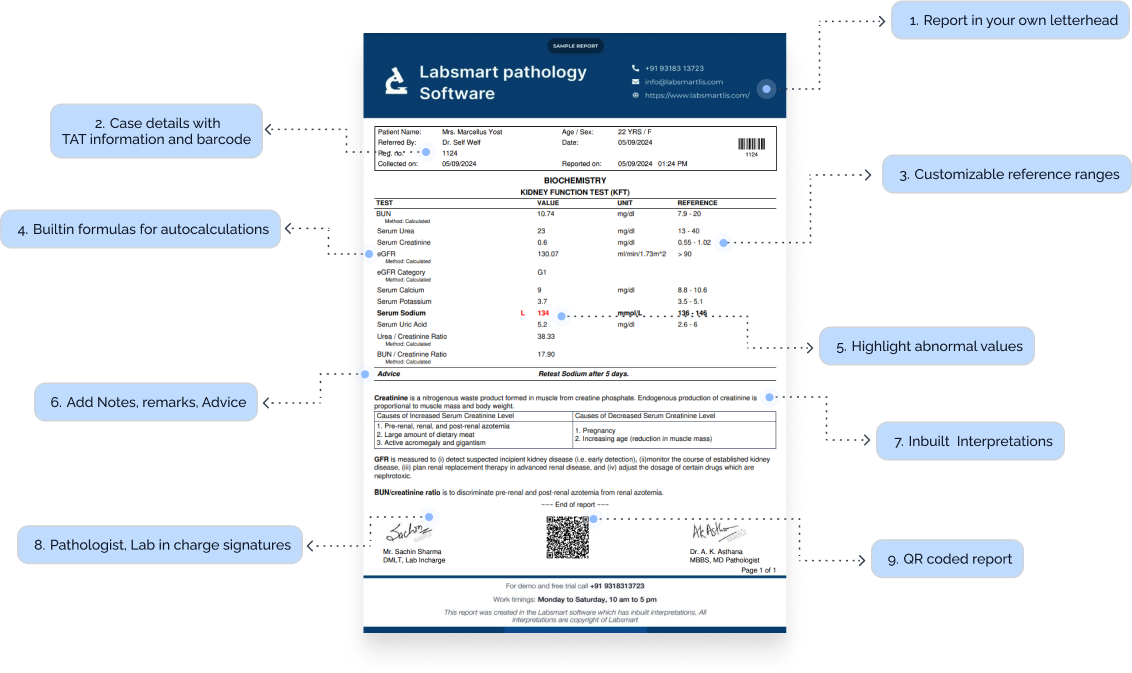What is Iron ?
The Iron test measures the amount of iron in a patient's blood, which is crucial for producing hemoglobin—the protein in red blood cells that carries oxygen throughout the body. Iron is an essential mineral that plays a key role in numerous bodily functions, including oxygen transport, energy production, and immune function. An imbalance in iron levels, whether too high or too low, can lead to various health conditions. Clinicians may order an Iron test for several reasons: Diagnosing iron deficiency anemia: Low iron levels can lead to iron deficiency anemia, a condition characterized by fatigue, weakness, and pale skin. The Iron test is used to confirm a diagnosis of anemia and determine the severity of the deficiency. Assessing overall iron status: The Iron test helps assess whether a person has enough iron in their blood for proper bodily functions. It can be used as part of a broader iron panel that includes tests for total iron-binding capacity (TIBC) and ferritin to evaluate iron stores. Investigating excessive iron levels: High iron levels can be indicative of conditions like hemochromatosis, where the body absorbs too much iron from food, potentially leading to organ damage over time. The Iron test helps identify elevated iron levels that may need further investigation. Monitoring iron therapy: Patients receiving iron supplements for iron deficiency anemia or other related conditions are often monitored using this test to ensure their iron levels return to normal. Detecting chronic diseases: Certain chronic conditions, such as liver disease, chronic infections, and some cancers, can affect iron levels in the body. The Iron test can help track changes in iron status associated with these conditions. The Iron test is often part of a broader set of blood tests, including a complete blood count (CBC) and other iron studies, to provide a more comprehensive view of a patient's iron metabolism and overall health.
Iron Report Format: Breakdown
Here’s what an ideal Iron report format should include:
Header Information:
- Patient Details: Full name, Age, Gender, and ID.
- TAT information: Timestamp for both sample collection and report generation.
- Doctor's Information: Name of the referral doctor, if applicable.
Test Results Section:
-
Patient's results
As obvious as it is, a test report should definitely have the patient's test result.
-
Result's Unit
The unit of the test result must be mentioned correctly in the report. Iron test is generally reported in “μg/dl”
-
Iron Normal Value / Reference Range
The report must have the normal Iron range. It can differ slightly based on the reagents used by the lab and other internal factors, but common Iron ranges are:
For any gender, 0 to 28 days of age: 100 - 250 For any gender, 28 days to 1 year of age: 40 - 100 For any gender, 1 year to 12 year of age: 50 - 120 For female, 12 to 100 year of age: 50 - 170 For female, 12 to 100 year of age: 65 - 175
Interpretations
Nowadays, most labs prefer to add interpretations to the reports, making the report more patient-friendly. Labsmart software has interpretations of all routine test pre-filled in the software.
Footer Section:
-
Certifications:
Display any relevant accreditations (e.g., NABL, ISO), adding to your lab's credibility.
-
Pathologist and technician signature:
It's mandatory to add a Pathologist and technician signature to the report.
Iron Interpretation
In Labsmart software, this is the inbuilt interpretation for Iron
Importance of adding interpretation to reports:
It's very helpful to add interpretation in reports as it makes the reports more patient friendly and also helpful to doctors in some cases. Moreover, presently most labs prefer providing reports with interpretation. Thus, adding interpretation to report will help your lab stay at par with other competitor labs.
Labsmart software
(With Interpretation and auto calculations)
- Billing
- Reports with Interpretation
- Auto calculation where needed
- Check daily business
- WhatsApp reports
* Free plan available

1.5 Crore+
Reports printed & delivered online
1250+
Labs Active
10+
Countries
Iron MS Word format
Download the Ms word editable Iron report format for offline reporting.
Download word format





